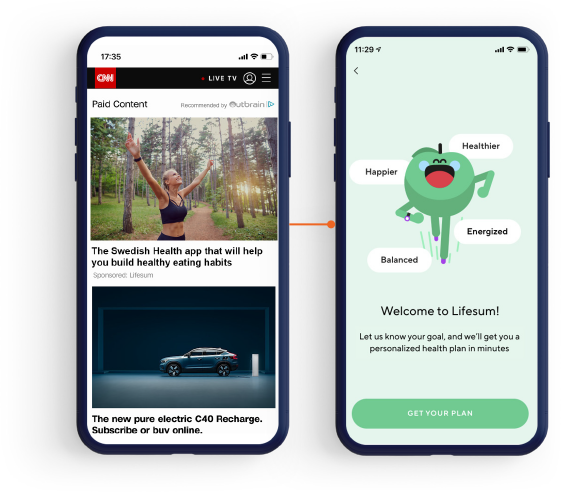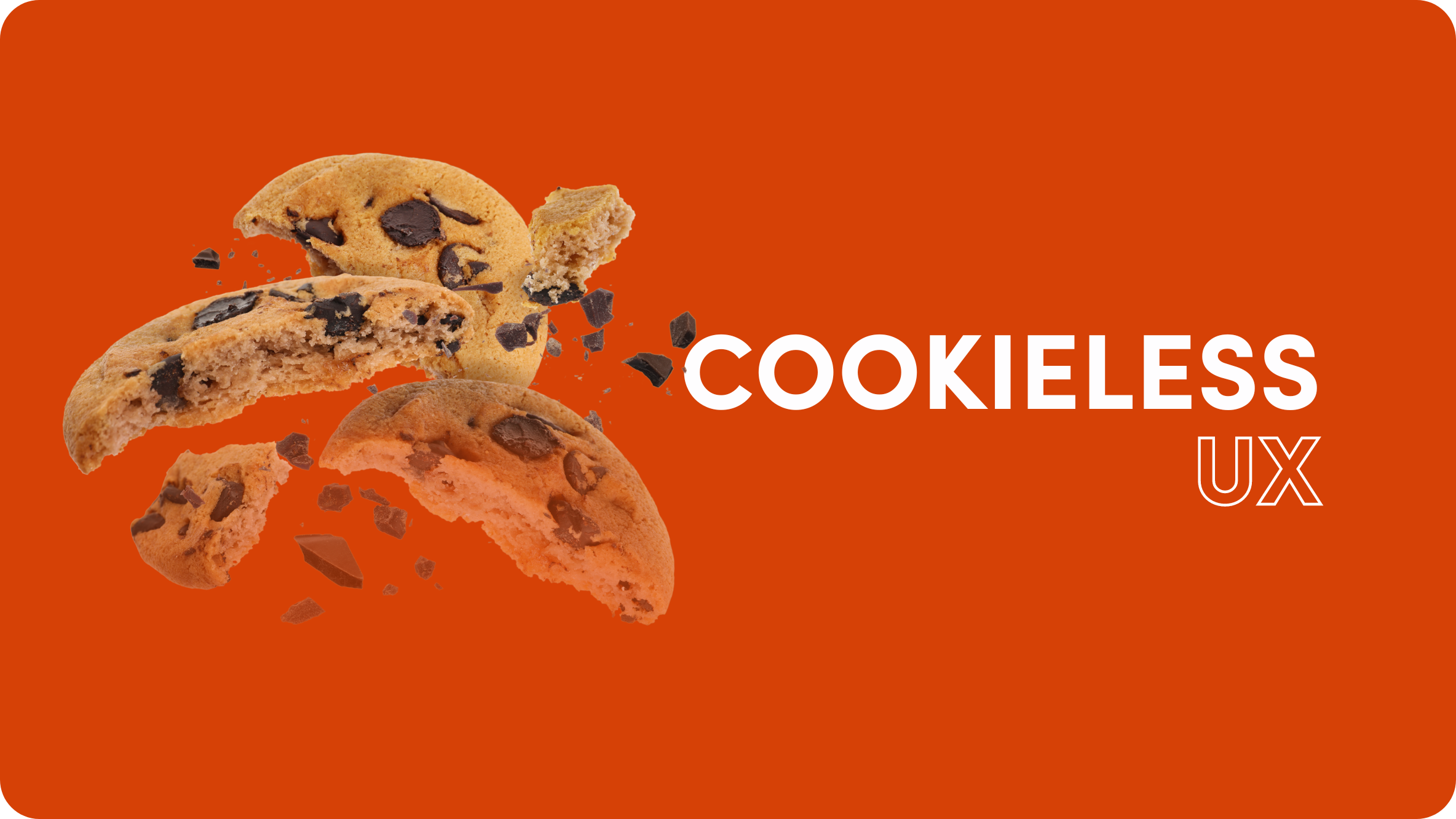How to Advertise Your Subscription Service Like the Best in the Business

In 2006, Daniel Ek and Martin Lorentzon saw an opportunity to change the world of music forever. On April 23 of that year, from their base in Stockholm, the two pioneers founded an audio streaming and media services provider that solely serviced Sweden. Little did they know, that company would soon expand to become the largest subscription-based audio streaming services provider in the world.
That company? Spotify.

Spotify’s recording and mixing studio, located on their LA campus (via Spotify).
While their success can be largely attributed to the product, there’s another aspect at play in their rise to stardom: the success of their marketing. The two founders grew Spotify thanks to an excellent omnichannel marketing strategy that allowed interested users to find, subscribe, and continue investing in their service.
These were the pioneers of the iconic ‘Freemium’ business model. With no one who had gone before, it was up to them to create successful strategies from scratch. With over 574 million active listeners as of 2023 (half of which are paying subscribers), they’re a shining example of what a well-informed advertising strategy can do for a subscription-based business.
In this article, we’ll review the fundamentals of advertising your subscription service to help you find success in your niche. We’ll explore what it means to know your value, omnichannel marketing best practices, and dive into real-life cases for successful advertising of subscription services.
The Fundamentals of Subscription Services
Recurring revenue is the lifeblood of a subscription service. Whether monthly or yearly, customers must loop back and make the decision to stay all over again. A continual flow of advertising is one of the ways to stay top-of-mind and convince subscribers to renew and stay connected.
On the one hand, subscription companies enjoy consistent revenue from users who can’t get enough of their services. On the other hand, competition in every subscription niche is rising, so the potential to fall from grace is high. In the media streaming industry alone, there are over 200 platforms and counting to compete with (as of 2023).
There are four main types of e-commerce subscription businesses:
- Entertainment subscriptions: Software-only companies that offer access to an existing software on a subscription basis. Spotify, Netflix, Disney+, or YouTubeTV are all excellent examples.
- Commodity goods subscriptions: Meal prep subscriptions like Hello Fresh and Amazon Prime are great examples in this niche, proving that disruption can be a good thing when it creates sustainable customer relationships.
- Box subscriptions: These types of subscriptions involve sending physical consumer goods to subscribers, based on their selections and preferences.A box subscription is ideal for products that consumers use regularly and need constant ‘restocking’, such as personal hygiene products or pet food. Companies like BirchBox and BarkBox are good examples.
- SaaS subscriptions. Companies like JIRA and AVG offer recurring access to helpful digital tools or softwares, ensuring a sustainable revenue stream on top of enduring customer relationships in specific niches.
The secret to success for subscription companies is two-fold: satisfy and retain the customers you already have, and bring as many more new subscribers as possible. Hence, advertising campaigns that lean into your unique selling point (USP) are essential.
Uniqueness is vital. To offer something your customers want that no one else can offer is a surefire way to keep them coming back.
Action point: Before moving any further, ask yourself: where does your business fall? Who is it for?
Once you have that answer, the next step is to communicate it to the right people.
The Value of Your Value Proposition
Only 20% of subscription businesses will succeed in increasing customer retention, which is the secret to not only surviving, but growing. To end up in that 20%, you need to craft an advertising strategy that spotlights your unique value in comparison to any competitors. To do that, you need to define your value, in the first place.
A value proposition is a core underlying aspect of your service that your customers will see value in, often unique to your business. For Birchbox, it’s personalized beauty products. For Netflix, it’s easy access to hundreds of movies and TV shows at the click of a button, with no ads.
Let’s return to Spotify for a moment.
Spotify gained their position by offering a free version of their service, known as the ‘Freemium’ tier in marketing lingo. This was the value proposition that catapulted them to stardom, as it allowed users to get hooked, and hit ‘Subscribe’ for the Premium version.
This brings us back around to the fundamentals of advertising itself: defining your target demographic, conducting market research to identify their pain points, and creating targeted messaging that speaks to unique buyer personas.

Lifesum’s native advertising strategy mirrored next to the front page of their app (Source: OutBrain).
For example, when Lifesum worked with Outbrain to increase subscriptions, they knew who they were looking for. Using Outbrain’s Conversion Bid Strategy – our proprietary auto-optimization tool – Lifesum targeted health-conscious individuals seeking transformation across Europe and North America.
Their video content was dialed in to meet the needs of their consumers, addressing pain points like lack of knowledge around nutrition, fear of failure, and quick exercise tips. They understood that their core value proposition was convenience and knowledgeable guidance for those seeking a positive change. Based on these insights, the campaign achieved a 130% increase in installs in peak periods, as well as a 136% increase in subscriptions. That’s an 11% Install-to-App Subscription rate, a marked increase compared to their earlier performance.
This is a real-time example of how understanding your value proposition (and the people who need it) can net a loyal subscription base.
Action point: Ask yourself the following questions
- What does my subscription service offer that no one else does?
- Why would a customer want to subscribe, and continue subscribing, to my service?
- How do I stand out from the crowd?
- What does my service disrupt about the current industry?
- How is my service better, more convenient, more knowledgeable, or more affordable than others?
- Who is my core customer, and what struggles do they deal with?
Best Omnichannel Practices for Advertising Subscriptions
One of the most important things to call out about Spotify’s marketing strategy is how diversified it is. Spotify’s digital marketing approach includes social media, online display ads, search engine marketing, and curated advertising on the free version of their own platform.
Single-channel advertising is a thing of the past, as customers can exist anywhere and everywhere online. With the right value proposition targeted to the right person in the right place, you have all the ingredients you need to take the subscription world by storm.
Let’s review the core channels to consider when crafting an advertising strategy for subscription-based businesses.
Social media
A well-crafted social media strategy is a must-have for any upcoming digital brand. Begin by building a strong presence online, crafting your messaging to echo the tone and style your target customers want to see. Focus groups, market research, and close metrics monitoring are all beneficial here, as they allow you to see what captures the attention of your target demographic.
The most important thing to do with your social media presence is to create a sense of community. Subscriptions invite a sense of belonging, especially when they’re experiential (like Spotify). Lean into your user base’s shifting behavioral tides, listen closely, and adapt your marketing to suit those just like them.
Native advertising
Native advertising adopts the look and feel of the web page or platform where the ad appears, so it doesn’t feel like an ad. That’s why native ads are less intrusive and more effective than display ads, helping to increase purchase intent by 18%. With Outbrain, subscription companies can advertise across a range of websites on the open web, such as news and entertainment sites, gaining the attention and interest of potential subscribers while they browse content in relevant contexts. For example, a music streaming service can promote native ads in web articles about music-related topics or in music e-zines. Blinkist is a company that provides summaries of nonfiction books via digital app. With Outbrain native ads, the company targeted readers looking to increase their knowledge base on sites like CNN, leading to up to 50,000 app downloads per month.
Affiliate marketing
For Spotify, affiliate marketing was integral to its success. They could have stopped by simply partnering with artists to stream their music, but they took it a step further to create full-fledged partnerships that drove their success. Exclusive albums, listener-focused curation, and affiliate sponsorships drove their platform to all-new heights.
Affiliate marketing can do this for any subscription, if best practices for affiliate marketing are closely followed. Ensure your messaging is crystal clear and communicated by a relevant affiliate partner to ensure it finds your target audience.
Email marketing
Email marketing relies on a finely tuned conversion funnel. Users interact with your brand on a free level first, much like Spotify’s ‘Freemium’ service offering. From there, after you have their email details, it’s a matter of crafting engaging campaigns that encourage them to make the leap to a paid version of the service.
Incentivise subscriptions with discounts or promotions for new and incoming users, especially around commerce-heavy periods, like seasonal marketing holidays.
SEO and SEM
SEO is a fundamental marketing practice that’s all about being found organically online. Users are out there searching for the type of service you’re offering. It’s just a matter of giving them the information they’re seeking, then offering your service as the most convenient and high-quality solution.
In the world of SEO, content is what matters. Developing a strong keyword strategy is vital to outstrip potential competitors on Google’s search results page. This ties in with balancing your organic and paid SEM campaigns, as finding the right balance can help minimize costs while maximizing incoming customers. Once customers find your website or landing page, it’s vital to test and re-test it to find the best user experience for optimal conversions.
4 Industry-Tested Tips for Customer Analysis and Retention
Across these channels, the best thing you can do for your business is maintain an open mind. Getting a customer is one thing, but keeping them on board is a whole different beast. Continually monitoring your campaign performance prevents messaging fatigue, which is vital when you have a living, breathing customer base you must entice from month to month.
Over our years of helping subscription-based companies reach their target consumers, we’ve collected a few core tips we’d like to share with you to nail your customer retention.
Establish clear conversion goals
Conversion goals are like landmarks. When customers convert, they let you know that the destination is not only appealing, but that their journey forward is clear for them. To understand how your campaigns are performing, it’s vital to establish clear conversion goals and track your progress. Once the conversion happens and the user becomes a subscriber, then the focus turns to retention rate – how to keep them as subscribers and make sure they renew when their subscription runs out.
Watch KPIs like a hawk
Once you have clear conversion goals, it becomes easier to understand what your advertising metrics are telling you. For example, a high Customer Acquisition Cost (CAC) in comparison to a low Customer Lifetime Value (CLV) would tell you that you’re investing too much in netting customers, and not enough in retaining them once you have them. It’s the difference between hunting through the haystack bare-handed to find a needle, and diving the haystack into sections while using a magnet to seek it out.
Incentivize existing subscribers
When you run a subscription-based business, retention is the name of the game! Establish high-value loyalty programs and incentivize ongoing patronage with rewards programs. These are excellent for maintaining consumer loyalty in the long term, helping to increase your consumers’ lifetime values.
Compare conversion channels
With an omnichannel marketing approach, you have the unique opportunity to observe your audience in multiple settings. Establish your high-conversion channels and focus your marketing efforts there, rather than losing money on channels that don’t net great results.
While Spotify holds the title of industry trailblazer, there’s plenty of room for newcomers to disrupt the status quo. Whether you’re just kicking off or re-strategizing for an existing company, adopt the pioneer mindset. Know your value, know who wants it from you, and connect the dots with tailored advertising on the right channels.
Let the World Know about Your Subscription Service
The Outbrain network has been connecting subscription services with their target customer base for years. Need an effective native advertising strategy for your subscription service? Try Outbrain.











